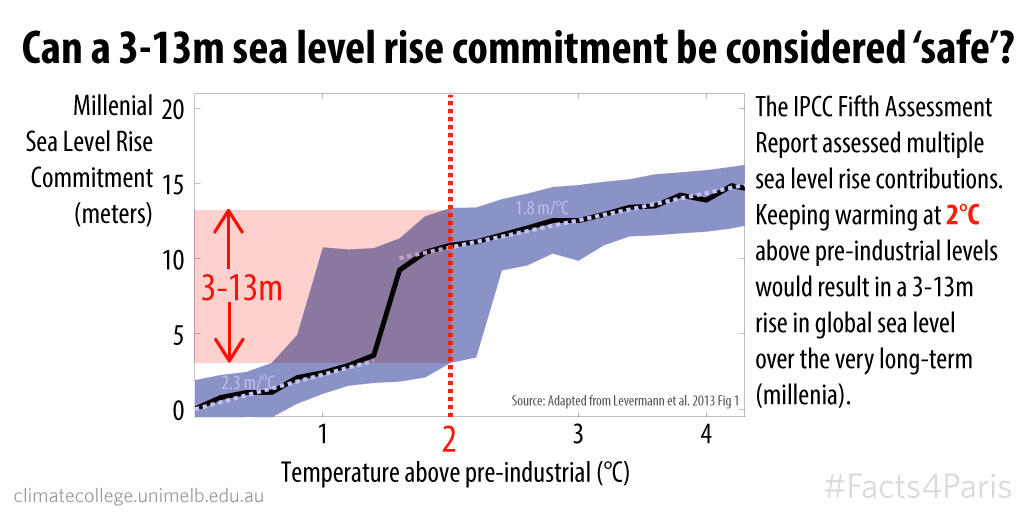Facts4Paris: Long-term millennial sea-level rise of 3 to 13 metres follows warming of 2°C.

Half a degree difference does not sound like much.
However, half a degree difference in global mean temperatures is likely to mean more than a metre difference in ultimate sea-level rise.
Summarising the evidence assessed in the IPCC Fifth Assessment Report, Levermann et al. have estimated that we are committed to a sea-level rise of approximately 2.3 metres per degree of warming for the next 2,000 years. Warming of 2°C above pre-industrial levels could mean anywhere between 3 and 13 metres of sea-level rise. The upper level of this estimate would come into play if we crossed the (uncertain) threshold of the Greenland ice-sheet starting to melt. Sometime after we warm 1.2°C but probably before we hit 2°C, we could cross the Greenland ice sheet threshold resulting in about 7 meters of sea-level rise (and with current warming we've likely already crossed the seaborne West-Antarctic melting threshold).
So, when in Paris negotiations we talk about the sharing of the mitigation burden it might be good to also keep in mind that there's a lot of 'burden' associated with every half-degree of warming that we don't avoid.